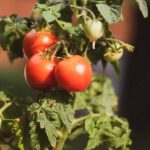Is pine straw safe for vegetable gardens? This is a common question among gardeners considering using pine straw as a mulch. Pine straw has gained popularity as a natural and attractive option for mulching vegetable gardens, but there are concerns about its safety. In this article, we will explore the benefits of using pine straw in vegetable gardens, address potential concerns, present research findings, and provide practical tips for using pine straw effectively.
Many gardeners favor pine straw for its aesthetic appeal and ability to suppress weeds while retaining moisture in the soil. Additionally, pine straw breaks down gradually, adding valuable nutrients to the soil as it decomposes. These benefits make it a popular choice for vegetable gardens seeking an organic and sustainable approach to mulching.
While the use of pine straw in vegetable gardens has its advantages, there are also concerns about its safety. Some worry that the acidity of pine straw may affect the pH level of the soil or that harmful chemicals from treated trees could leach into the garden. In the following sections, we will address these concerns and examine scientific research on the safety of using pine straw in vegetable gardens.
Benefits of Using Pine Straw in Vegetable Gardens
Pine straw has become a popular choice as mulch for vegetable gardens due to its numerous benefits. Using pine straw can help improve the health of your vegetable garden and contribute to a successful harvest. Here are some of the key advantages of using pine straw as mulch in vegetable gardens:
- Weed control: Pine straw helps suppress weed growth, reducing competition for nutrients and water among your vegetable plants. This can save you time and effort in maintaining your garden.
- Moisture retention: One of the most important benefits of using pine straw is its ability to retain moisture in the soil. By covering the soil with pine straw, you can prevent water evaporation, reduce the need for frequent watering, and ensure that your vegetables have consistent access to moisture.
- Soil insulation: Pine straw acts as a natural insulator, helping regulate soil temperature by keeping it cooler in hot weather and warmer in cold weather. This can create a more stable environment for your vegetable plants, promoting healthy growth.
In addition to these benefits, using pine straw as mulch can also contribute organic matter to the soil as it breaks down over time. This improves soil structure and fertility, enhancing the overall health of your vegetable garden.
While there are certainly advantages to using pine straw in vegetable gardens, it is important to consider potential concerns related to its safety. Addressing these concerns will help you make an informed decision about whether or not to use pine straw in your garden.
Potential Concerns
Pine straw, also known as pine needles, has become a popular choice for mulching vegetable gardens due to its numerous benefits. However, there are some potential concerns about the safety of using pine straw in vegetable gardens that need to be addressed.
One common concern is the acidity of pine straw and its potential impact on soil pH. Pine straw is slightly acidic, with a pH ranging from 3.2 to 3.8. Some gardeners worry that using pine straw as mulch may make their soil too acidic for growing vegetables.
While it’s true that pine straw can lower the pH of the soil over time, the effect is minimal and usually not harmful to most vegetable crops. In fact, some acid-loving plants like tomatoes and peppers can benefit from the slight acidity of pine straw.
Another concern is the potential allelopathic effects of pine straw on vegetable plants. Allelopathy refers to the chemical inhibition of one plant by another through the release of toxic substances. Some gardeners worry that decomposing pine straw may release allelopathic compounds that could harm their vegetable crops. However, scientific research on this topic has found that any allelopathic effects of pine straw are minimal and do not pose a significant risk to vegetable gardens.
Overall, while there are valid concerns about using pine straw in vegetable gardens, scientific research indicates that these concerns are generally unfounded. With proper application and monitoring of soil pH, pine straw can be a safe and effective mulch for vegetable gardens.
| Concerns | Information |
|---|---|
| Soil Acidity | Pine straw has minimal impact on soil pH |
| Allelopathic Effects | Research shows minimal allelopathic effects on vegetables |
Research Findings
Pine straw is a popular choice for mulching vegetable gardens due to its numerous benefits and natural appeal. However, many gardeners have concerns about its safety and potential impact on their crops. To address these concerns, scientific research has been conducted to determine whether pine straw is safe for use in vegetable gardens.
Research findings have indicated that pine straw is indeed safe for vegetable gardens when used properly. Some key points from the research include:
- Acidic pH levels: Pine straw has slightly acidic pH levels, which can be beneficial for certain types of plants, such as blueberries and azaleas.
- Weed suppression: Studies have shown that pine straw effectively suppresses weed growth in vegetable gardens, creating a healthier environment for crops.
- Soil insulation: Research has demonstrated that pine straw acts as an effective insulator for the soil, helping to maintain moisture levels and protect roots from extreme temperatures.
Furthermore, extensive research has shown that the decomposition of pine straw adds valuable organic matter to the soil, improving its overall quality. This process also contributes to better water retention and nutrient absorption for vegetable plants.
Tips for Using Pine Straw in Vegetable Gardens
Pine straw is a popular choice for mulching vegetable gardens due to its numerous benefits and natural appearance. However, there are specific tips for using pine straw effectively in vegetable gardens to maximize its advantages.
Firstly, when applying pine straw as mulch, it is essential to spread it evenly around the base of plants to ensure proper coverage and insulation for the soil. This will help retain moisture, suppress weed growth, and regulate soil temperature, all of which contribute to healthier vegetable plants. Additionally, it’s important to avoid packing the pine straw too tightly as this can prevent air and water from reaching the soil.
Another practical tip for using pine straw in vegetable gardens is to replenish the mulch layer regularly. Over time, pine straw decomposes and breaks down, so adding a fresh layer every 6-12 months helps maintain its effectiveness as a mulch. This also provides an opportunity to clear away any weeds or debris that may have accumulated on top of the existing pine straw layer.
Lastly, consider using a barrier or edging material around your vegetable garden beds when using pine straw as mulch. This will help contain the pine straw and prevent it from spilling over onto walkways or other areas where it may be unsightly or cause maintenance issues. It’s also important to keep the area well-mulched throughout the growing season by topping up with additional fresh pine straw as needed.
| Tips for Using Pine Straw | Practical Advice |
|---|---|
| Spread evenly around plant base | To ensure proper coverage and insulation for the soil |
| Replenish regularly | To maintain effectiveness as a mulch and clear away weeds/debris |
| Use barrier/edging material | To contain pine straw within garden beds and keep area well-mulched |
Best Practices for Applying Pine Straw in Vegetable Gardens
Preparing the Garden Beds
Before applying pine straw as mulch in vegetable gardens, it is important to prepare the garden beds properly. Start by removing any existing weeds and debris from the soil to ensure a clean surface for the pine straw. It is also recommended to add a layer of compost or organic fertilizer to provide essential nutrients for the vegetables.
Even Distribution
When applying pine straw in vegetable gardens, it is crucial to ensure an even distribution of the mulch. This can be achieved by spreading out the pine straw layer gently and evenly across the entire garden bed. Aim for a thickness of around 2 to 3 inches, making sure not to smother the plants or create thick clumps of pine straw in certain areas.
Maintenance and Renewal
Proper maintenance of pine straw in vegetable gardens involves regular monitoring of its condition. Over time, pine straw may break down and decompose, so it’s important to replenish the mulch as needed. Additionally, keeping an eye on weed growth and adjusting the mulch layer accordingly can help maintain a healthy and thriving vegetable garden.
By following these best practices for applying pine straw in vegetable gardens, gardeners can ensure that their plants receive maximum benefits from this natural mulching material.
Alternatives to Pine Straw for Vegetable Gardens
When it comes to vegetable gardens, finding the right mulch is essential for maintaining healthy and productive crops. While pine straw is a popular choice for many gardeners, there are other mulch options worth considering. Exploring these alternatives can help you find the best fit for your specific gardening needs.
Wood Chips
One alternative to pine straw is wood chips, which offer excellent moisture retention and weed control. Wood chips also break down slowly, providing long-lasting benefits for your vegetable garden. They are available in various sizes and can add a decorative element to your garden beds.
Straw
Using straw as mulch is another option for vegetable gardens. Straw helps retain soil moisture, suppresses weeds, and insulates plant roots from temperature fluctuations. It’s important to note that not all straw is suitable for vegetable gardens, so be sure to choose clean straw that does not contain weed seeds or herbicides.
Grass Clippings
If you have access to untreated grass clippings, they can serve as an effective mulch for vegetable gardens. Grass clippings provide valuable nutrients as they break down and enhance soil fertility. However, it’s crucial to avoid using clippings from lawns treated with chemicals or pesticides.
Conclusion
In conclusion, the use of pine straw as a mulch in vegetable gardens has both benefits and potential concerns. While it can help with moisture retention, weed control, and soil temperature regulation, there is some concern about its safety due to its acidity and allelopathic properties.
However, scientific research has shown that when used properly, pine straw can be safe for vegetable gardens. It is important to follow best practices for applying pine straw, such as avoiding direct contact with plant stems and monitoring soil pH levels.
When using pine straw in vegetable gardens, it is essential to consider the specific needs of the plants being grown. Some vegetables may thrive with the use of pine straw as a mulch, while others may be more sensitive to its effects.
Additionally, gardeners should also explore alternative mulch options for their vegetable gardens, such as straw, compost, or shredded leaves. Ultimately, the decision to use pine straw in a vegetable garden should be based on careful consideration of its benefits and potential risks in relation to the specific needs of the plants being grown.
In summary, while there are some concerns about the safety of using pine straw in vegetable gardens, when used correctly it can provide various benefits. Gardeners should carefully weigh the advantages and potential drawbacks before making a decision to use pine straw as a mulch in their vegetable garden. By following best practices and considering alternative options, gardeners can make an informed choice about whether or not to incorporate pine straw into their gardening routine.

If you’re looking to get into vegetable gardening, or are just looking for some tips on how to make your current garden better, then you’ve come to the right place! My name is Ethel and I have been gardening for years. In this blog, I’m going to share with you some of my best tips on how to create a successful vegetable garden.





